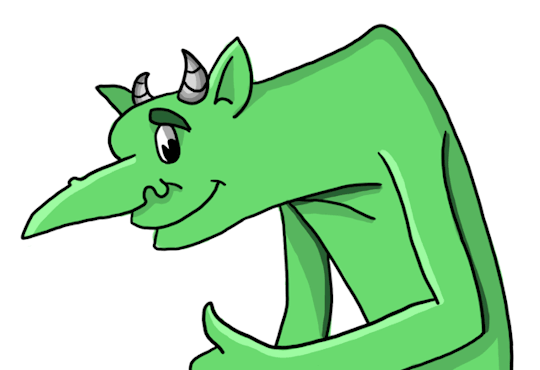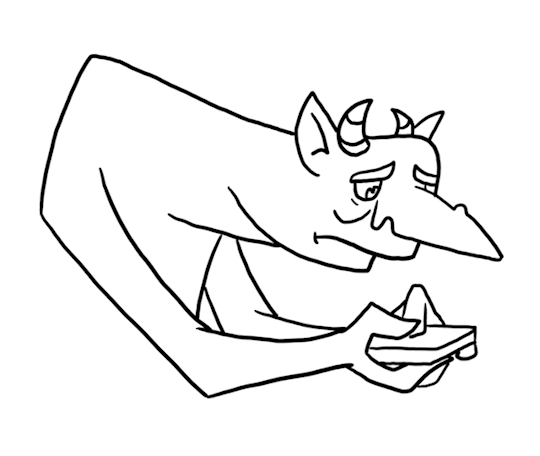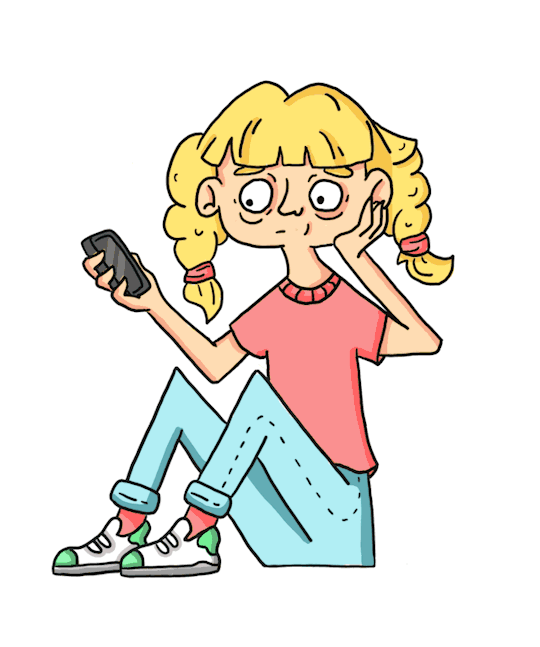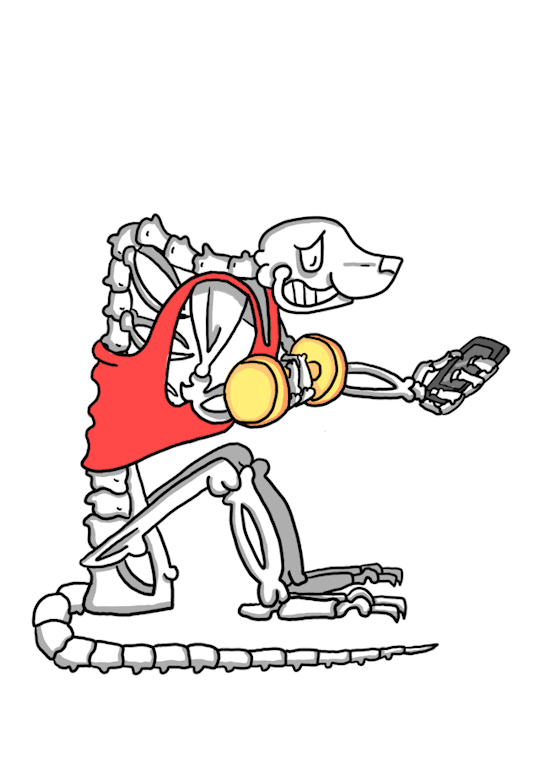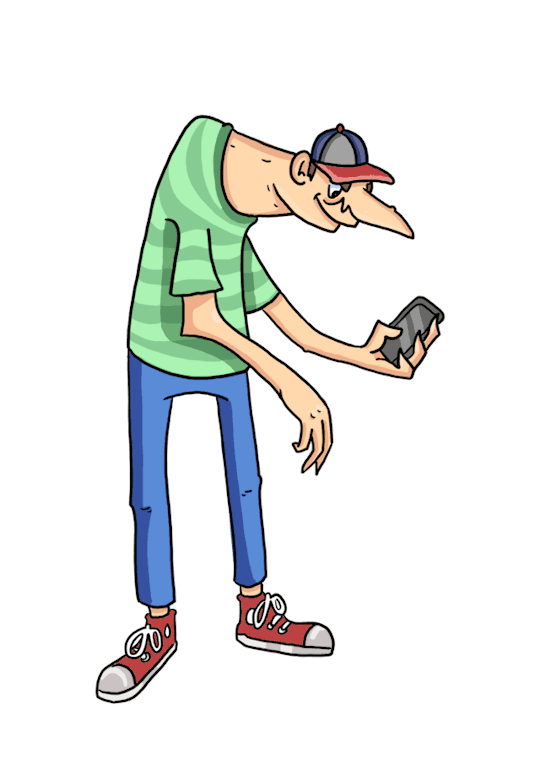Text
UNIT EIGHT: GEN Z- Forum, Generating Ideas about our Generation
On the 23rd of April I had a second Forum meeting with my friends to discuss further questions about our generation. We generated the following ideas:
How can we define the voice of a generation?
Difficult question, generation is so broad and it depends from where in the world you look at it
Measure and observe the generations reactions and actions to large scale events and changes in the world.
Can start by defining the generation literally, we are a big generation compared to previous ones, and are young, many of use have not yet entered the workforce
We can look literally for the ‘voice’ of the generation through protests such as extinction rebellion and the Hong Kong protests, protests online with petitions and listen to the voices through YouTube and video
Look to the internet- our generation is connected across the globe, we have the most access to information and the tools to use it more than any other generation. We can see the impacts of this on forums and the way we behave in real life.
What does your generation want?
Touched more on this topic in previous forum, please see other post. The following ideas were also added:
We seem to want more time, everything is convenience based in the aim of giving us more time. More time to do what? Most leisure activity?
We are generation truth. We want to learn the truth behind brands, consume ethically, always looking at our impacts on the world.
What has your generation learnt, good or bad, from previous generations?
We have learnt from previous generations mistakes that we need to take care of the environment.
We have inherited the idea of convenience culture from previous generations, especially millennial’s. This often makes us lazy and stops us from achieving what we could. It also offers a contradiction to most peoples thoughts about saving the environment
Learnt about the impacts of mental health from the internet and the faster world view from millennial’s and are beginning to manage it with things like mindfulness.
What are your general impressions of the zeitgeist?
We all agreed that we think the zeitgeist has changed from the millennial generation to ours. We thought that the increasing dominance of technology has made the zeitgeist more intense because it is able to be shared globally.
The feeling of the zeitgeist in our generation is one of stress. This is due to technology and the general feeling of the young generation that we have little power over the way things are run.
What is your local view personally, or within your close circle of friends?
The wide view in my circle of friends is that the zeitgeist of our generation is one of apathy. People don’t care about things with much passion in our generation, and certainly not enough to do much about it. We decided that this was because all of our base needs are being fulfilled by society so there isn’t much to fight for. This also links to the idea of our generation being a sensitive one, we are all politically correct. This is probably because these petty things are the only things remaining to be passionate about.
Do you think that this varies from culture to culture?
Yes, it does. One of the friends in the forum is from Hong Kong, and he noticed that lots of our generation in Hong Kong are the ones actively protesting.
However, we noted that most of our influence in our group was western. Even though the internet shrinks boundaries between traditional cultures, the mood on the internet as we know it is profoundly western. I think the apathy we can pinpoint is a western thing
Is ‘everything’ a form of culture now?
We agreed that in a way, yes, everything is a form of culture now. This is partly due to globalisation making one large culture and destroying smaller, more vibrant cultures, as well as the impact of the internet.
The internet has its own culture and its own sub-cultures. Our generation has an in-uniform identity because we have the space online and the freedom to fit into increasingly niche mini-cultures and factions.
We agreed that this made us a hard generation to market to for companies and brands because there is no longer any defining traits for the way we think as an age group.
Do you think growing up with the internet has made you feel more individualistic or part of a collective society?
Yes and No was the prevailing answer to this one
We have become more individualistic because we are more often alone, we meet online but not in person. We have the ability to be completely anonymous and therefore this gives us the power to attack others and be selfish without repercussions.
We have become more of a collective society because it is easier to form communities with others with the same thoughts, opinions and interests as you.
However, personally I think that growing up with the internet is more likely to make you more individualistic because there is less human connection, and when you can make a community, the community is much more likely to be an echo chamber.
0 notes
Text
UNIT EIGHT: GEN Z- Exploring the Meaning of ‘Editions’
The brief states that we must make artwork for this project in ‘editions’. I am going to explore what an ‘edition’ is and the different forms it can take before thinking about what possible form my work could take.
What is an ‘Edition’?
According to Tate:
An edition is a copy or replica of a work of art made from a master. It commonly refers to a series of identical impressions or prints made from the same printing surface, but can also be applied to series of other media such as sculpture, photography and video
So, the word ‘edition’ fits the most neatly into the idea of making either prints or sculptures, where repeats of the same design can be made from a ‘master copy’ such as a silkscreen or cast.
What is the Difference Between an Edition and a Reproduction?
So, if editions are simply copies of an artwork made from a master, what is the difference between them and reproductions?
An edition is part of a set of original works of art intended for graphic reproduction and produced by or under the supervision of the artist who designed it.
Each work in the edition has unique qualities and can vary slightly because each one is created individually.
A reproduction, on the other hand, is considered a copy/facsimile of the original work—not created in the same medium as the original artwork, usually using photomechanical means. So, not an artwork itself.- https://www.artworkarchive.com/blog/9-things-to-know-about-art-editions
The difference is clear- an edition is an individual work of art, a copy of a master, but still made by the artist with slight differences. A reproduction is simply a copy of a piece of art, identical to the original but not made by the artist or in the original medium.
Why make Editions?
From what I can gather, the reason for making editions is purely commercial. An artist would make multiple copies of a print to sell. There would be minor differences between them because they are made individually, but otherwise would be the same, ready to sell. this is different than a series, where artworks are grouped by example, theme, by are ultimately different. Series are usually made for more than just selling.
By making multiple editions, but in a limited number, an artist can drive up their sales while also making a demand for their product because of the limited supply. Limited Editions are the most valuable. Open editions are also valuable because they are unlimited in number, but can fetch a smaller price per artwork because there are lots of them.
What can be an Edition?
Edition is a term broadly used to mean printmaking. This is because copies prints can be made in an organic way by the artist very easily, using the same plate or screen. Editions of books and magazines are also another very common use of the term. In books, a new edition is made when slight changes are made to the contents.The idea of an ‘edition’ is also easily applied to sculpture and photography for the same reason because the artist can use a casting and development techniques to easily make unique copies.
However, according to Tate, video can also be made in ‘editions’. I don’t understand this because how was video be made in copies that are not reproductions? Copies of video are digital and are inherently reproductions because they are absolutely identical. The brief gives some digital examples of ‘editions’ which I think stretch the definitions somewhat. I don’t believe that a digital file can be successfully ‘editioned’? I think they end up being reproductions.
Some Other Examples of Editions-
Digital Native Artwork- We=Link
We=Link is a collection of digital artwork editions which explore the world of art from a digital perspective following the COVID-19 outbreak.
The works presented in this exhibition are network-native, exploring the potential of mobile technologies. Many employ with a creative and critical appropriation of various social media platforms. With this online exhibition, CAC aims to reaffirm the importance of net art practice, which offered crucial contributions to early discourses on internet culture during the formative years of new media art as a genre, and which continues to play a vital role in shaping the dynamics of an ever more pervasively networked society. -https://rhizome.org/editorial/2020/mar/30/first-look-welink/
Some of the most interesting work to me in the show are:
Get Well Soon!- Tega Brain
Get well soon! is a massive e-card comprised of over 200,000 unique messages of well wishes. The messages are sourced from comments of support on the popular crowd funding site gofundme.com

Screen Time- Helmut Smits
Screen Time is a community clock connecting strangers through their mobile backgrounds. Participants are invited to take part by making a screenshot of their mobile device lock screen and submitting it to the allocated time slot. The submitted images are then compiled and presented, each being displayed for the single minute at which they were taken. The outcome is a clock that each minute reveals a glimpse into someone else’s life.
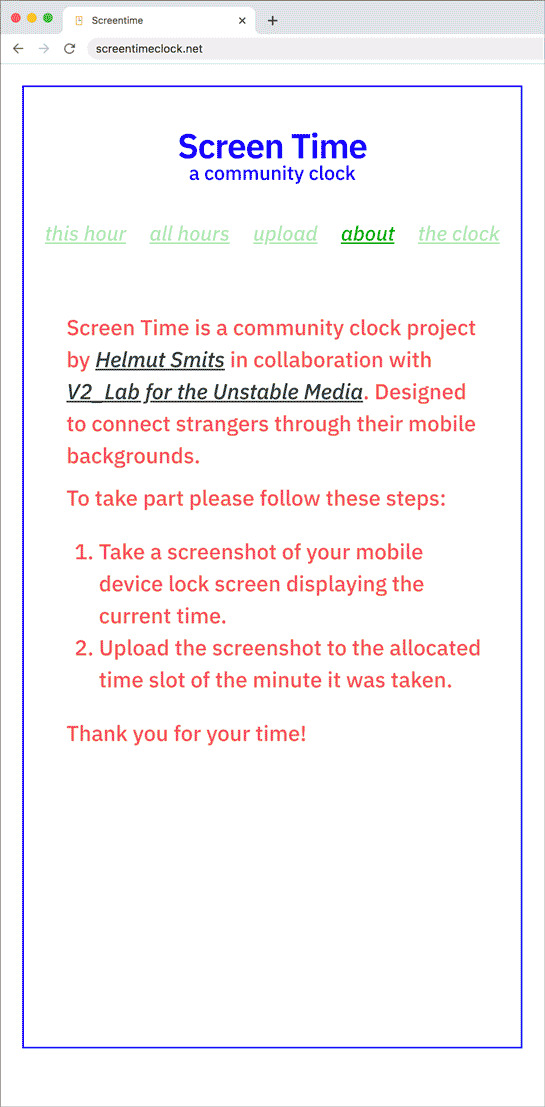
I liked these two works the most because I think they offer a window into the faceless masses that communicate on the internet, offering a window into internet culture. I am really interested in the way these artworks are purely digital, and make use of their website/app contexts to blend into the environment more and more of us are spending time in in lockdown.
Possible Formats for my Work:
Looking at all this information I believe I have the following options to make work:
Editions of Prints, made in lino, screen, etching, mono ect
Editions of a Zine or Booklet, each with slightly different content
Editions of a Sculpture made using a mould or cast
Editions of a Photo developed using traditional methods
Editions of a video? Although I don’t understand how these can be editions?
Editions of another product, such as badges, plates, bags, t-shirts ect
Not all of these are possible under lockdown conditions, but I could make many of them work using limited resources.
0 notes
Text
UNIT EIGHT- GEN Z: Exploring the References- Part 2
The following was taken from the second document of references for the Gen Z brief. I have interpreted their relevancy to the project.
Saying Something Personal with a Gift
The second part of the brief is concerned with creating a “framework to deliver your works to the public for sale or exchange”. Marcel Mauss’ book about the sociology and psychology around the idea of giving is referenced as an interesting perspective to look at when considering making a point of sale.
The Gift as an Exchange of the Soul: Mauss suggests that when you give a gift, you not only give an object, but part of yourself. The receiver then has a social obligation to reciprocate because of the social bond formed through the giving of a part of ones self.
Not to reciprocate means to lose honour and status, but the spiritual implications can be even worse: in Polynesia, failure to reciprocate means to lose mana, one's spiritual source of authority and wealth.
The Gift as a Connection: Mauss emphasises that objects bought become alienated from their seller, but an object gifted is always tied to its giver. Because the gift object is tied to its giver, it obligates the receiver to return the gift.
The notion of an expected return of the gift creates a relationship over time between two individuals. In other words, through gift-giving, a social bond evolves that is assumed to continue through space and time until the future moment of exchange. Gift exchange therefore leads to a mutual interdependence between giver and receiver.
In connection to the brief, I think the idea of the gifted object being intrinsically tied to its giver is interesting. I like the idea of my work for the project still being attached to me and my thoughts/feelings/generation/zeitgeist when I eventually give it to my audience.
Saying Something by Combining Art and Text
Emory Douglas was the minister for culture for The Black Panther Party, a revolutionary political party of which a core practice was monitoring the behaviour of the police to challenge police brutality. Douglas originally helped with the layout of the Black Panthers' newspaper, and realised that art could enhance their campaigns and reach the masses
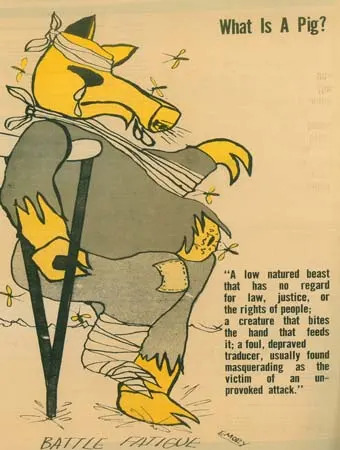
This shows how illustration has a greater power to draw people to a cause than it is usually credited for. I think making illustrations accompanied by text would be a good idea as a beginning point for this project.
Saying Something when Physical Presence isn’t an Option.
In light of the COVID-19 pandemic, gathering to discuss work and deliver the second part of the brief in person is no longer an option. The brief offers an interesting solution made for a different purpose of the possibility of still saying something where physical presence is not an option. In South Korea, a protest was arranged with holograms, since the government had rejected a physical one, and incited punishments to those seeking to express their freedom of speech.
"Freedom of speech and assembly has deteriorated since Park Geun-hye took office," says Ahn Se-young, a campaign manager at Amnesty Korea. "Why can we hold a demonstration here only as ghosts? That's what we want to ask."
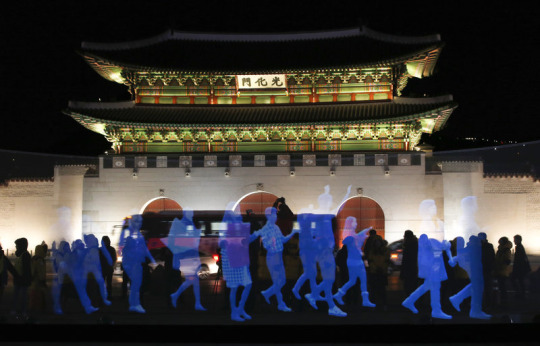
Volunteers were filmed in a procession, and hundreds recorded and submitted their voices online for the cause. This is an extremely innovative way around the fact that these people could not protest physically. There were still able to get their voices heard, and highlight dramatically the fact that their freedom of speech has been impacted simply through the medium of their message.
I think using the medium of the message itself to back up comments being made is a way to make your work very powerful. It is definitely something for me to think about in the development of the project.
Everybody in the Place- Jeremy Deller:
In his documentary about the history of rave and acid house, Deller tells the history of Britain through this lens to a Politics class of year 12 and 13 . This presentation is interesting because it immediately poses the idea of a generational gap, and highlights differences between the way the young people and Deller have experienced growing up. I found the following interesting points from the documentary:
The older generation who make/ present media to the younger generation is often completely out of touch from the youth culture.
References to Karl Marx’s theory about the ‘means of production’. By taking control of the ‘means of production’- of art or music in this case- a class or generation can make something for themselves that relates to their feelings and situations.
The impact of something new from minorities being able to make major cultural history for a whole generation due to experiments and pioneers spreading it within safe spaces like clubs.
How technology has changed the way we can express ourselves. People in raves back then were free to express themselves in fringe ways because there were no repercussions. Now people are afraid to because people are able to record things on their camera phones so spaces become less unique and less safe.
0 notes
Text
UNIT EIGHT- GEN Z: Exploring the References- Part 1
The following is an exploration of references given on the Gen Z brief.
On Having Something you Absolutely Have to Say:
The first reference given on the brief Stanley Green, a man who had something he felt he absolutely had to say.
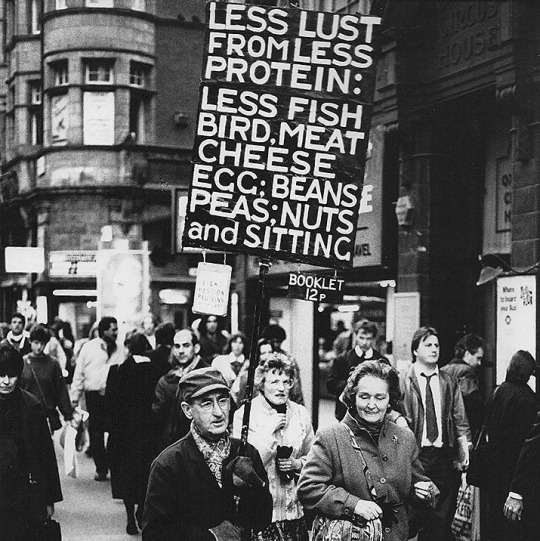
Stanley Green made himself known as the protein man, becoming a human billboard in central London between 1968 and 1993. He outlined in his booklet- Eight Passion Proteins that people who did not work hard physically stored up the protein they ate and unleashed it in passion which was the cause for unrest and discord in humanity. He argued that people should eat less protein and spend less time sitting.
Although Green’s message was widely ignored, he and his message were undoubtedly visible, a key factor for the Gen Z project. He devoted himself to a singular cause and stuck to it, actively promoting it on the streets for 25 years. His booklet, made on a home printing press over the weekend, went through 52 editions (another key word) between 1973 and 1993.
Green’s work is an excellent example of both visible work, and editioned work, two key points for the Gen Z brief. I need to find a cause/point in my research around zeitgeist and gen z which I am able to promote in a similar way to Green. It has to be something I feel I have to say in order to have the sufficient meaning and weight behind it, even if, like Green was, I am alone with my message.
Another example of having something you absolutely have to say from the brief is Valerie Solanas.

Solanas is responsible for the SCUM (society for cutting up men) manifesto. The manifesto:
argues that men have ruined the world, and that it is up to women to fix it. To achieve this goal, it suggests the formation of SCUM, an organisation dedicated to overthrowing society and eliminating the male sex.
The manifesto was little known until 1968, when Solanas attempted to assassinate artist Andy Warhol by shooting him. Solanas self-published the first edition of the manifesto by making two thousand copies with a mimeograph. Like Green, Solanas felt like she had something to say, and created a publication to say it with, making prints herself and handing them out on the street.
On Saying Something Personal:
Both Green and Solanas made their publications as direct reactions to perceived issues with the society they lived in. Their messages are directly related to the world around them. Charlotte Salomon, was a German Jewish woman who painted 1700 confessional Images including her sequential work"Life? or Theatre?”. Her work attempts to try and come to terms with a life beset by the hazards of the Holocaust and the heritage of a family beset by a heritage of mental illness. Instead of a direct move against the situations she found herself in, her paintings are personal. She reacts to her mother dying and having to deliberately poison her grandfather by creating personal artwork which is not directly about the holocaust.
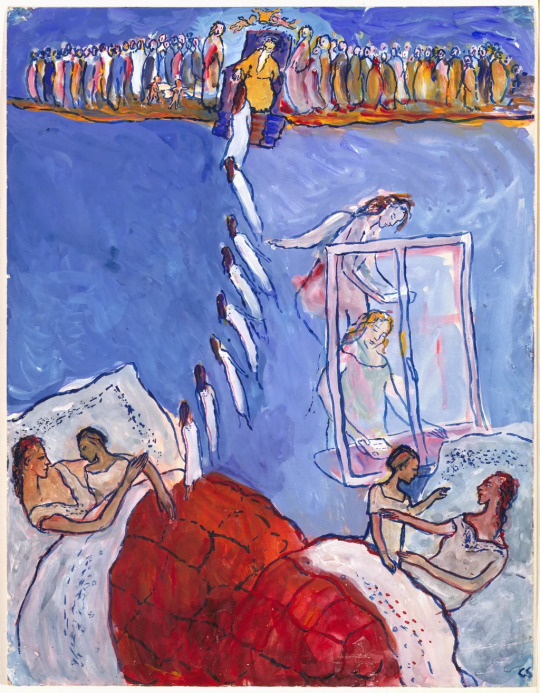
And yet, apart from a handful of depictions of the Third Reich, Salomon’s work is not about the Holocaust at all but, rather, about herself, her family, love, creativity, death, Nietzsche, Goethe, Richard Tauber, Michelangelo, and Beethoven. It chronicles the genesis of an artist from a family of dark secrets—mental illness, nervous breakdowns, molestation, suicides, drug overdoses, and Freudian love triangles: a harbinger to our age of grand confessionals.- https://www.newyorker.com/culture/culture-desk/the-obsessive-art-and-great-confession-of-charlotte-salomon
This is a great example for the Gen Z project because it opens up the possibility of creating something reflective of my own personal experience which undoubtedly captures the essence of my generation because it is the perspective I have no choice but to speak from. I don’t have to make a huge comment about the society I live in in order to make a point about my generation.
On Saying Something with Limited Resources:
We are definitely currently living through a defined moment in history with the COVID-19 pandemic. Never before has the world had to shut down like this, especially during peacetime. As a result, as artists we are working with limited resources- having to work without a studio and without the ability to go any buy many technical media. However, this simply means we have to more inventive than usual, not give up. The example given on the brief comes from the story of The Great Escape.
During World War Two, captured soldiers and airmen were held German camps. A mass escape was organised to occur on the 25th March 1994. In order to escape they needed the following items:
Maps-
Maps were made of the possible routes out of the camp and then out of Germany. They were made with completely scavenged materials:

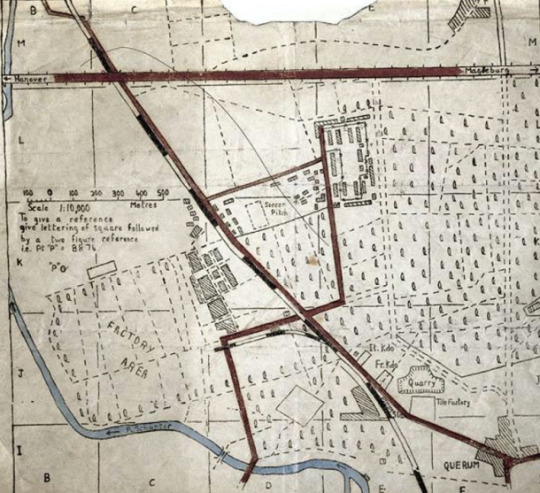
Each map was printed multiple times (Editions!) in order to be distributed to as many men as possible to give them all the best chance. These men had basically nothing to work with, and managed to make something incredibly accurate looking.
Document Forgery-
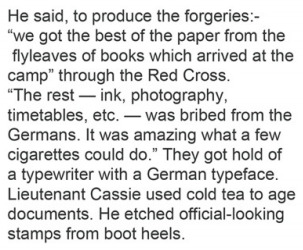
Similar creativity was needed to make the documents the men would need to travel through Germany to escape.
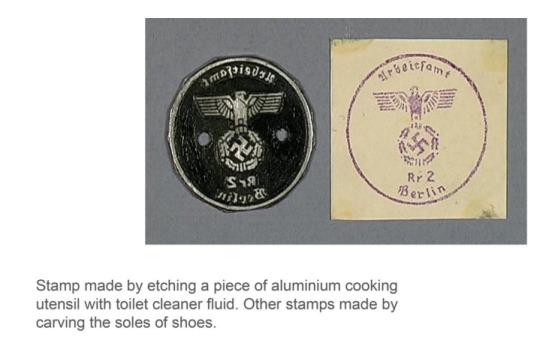
Makeshift etching!!
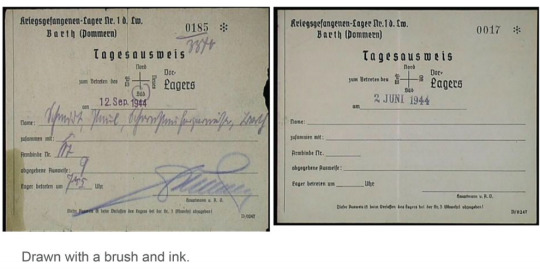
Real pass is on the left and a fake one produced with a brush and ink is on the right- shows its incredible accuracy.
Another example from the Prison Camps are the prisoner-made newspapers, made to inform others about how the war effort was progressing in the outside world. They were made by a type of mono-printing.

Looking at all of this amazing inventive creativity it makes me want to try and make something more ambitious with my limited resources. What these men achieved in the Prison camps is nothing short of a miracle, it is inspiring. Perhaps I could make my own printing or etching press...?
0 notes
Text
UNIT EIGHT- GEN Z: First Look: Exploring the Brief
Initial Ideas Based on the Questions in the Brief:
Before I answer the questions from the brief, I want to make it clear that I don't believe that the generation system is a good one to outline life experiences. I don't think that the Gen Z label is well defined enough to answer these questions currently because of how new the generation is, and the fact that most of us have not yet entered the workforce. I also want to make clear that the majority of my answers to the questions are informed opinions.
What does Generation Z have to offer?
Because the generation is current, it is difficult to define. It is very hard to avoid sweeping statements and stereotypes. The following points came up when brainstorming as well as talking to others in my generation. However it is important to view these ideas as somewhat stereotypes, and will not reflect the individuals in the generation. I found talking to my parents helpful because a lot of ideas were highlighted through comparison with previous generations. I think it is also important to remember that what we have to offer isn't always a positive.
Increased Connectivity Gen Z have grown up with the internet. We understand how to use the technology to our advantage, making us the most inter-connected generation yet. We can communicate, share ideas and create content using the internet. However, we are also addicted to social media which has an overall negative effect on mental health. We are increasingly using the internet to consume products through streaming services, paying the artist poorly and never owning the products ourselves.
An Active Concern for the Environment While previous Generations have seen the negative effects on the environment grow. Gen Z are the first to integrate the concerns into their everyday way of life from the get go. Gen Z is the home of vegans, zero waste, minimalism, ditching plastic and actively seeking sustainability.
A New Look at Identity Gen Z have new ideas about identity. We are the generation most concerned about the social constraints and inequalities posed by gender, sexual and racial identity. Under Gen z, gender and sexuality have become fluid with large scale acceptance. Because of the internet, there are now more niche subcultures and social identities than ever before. This has made us the more accepting, ethical generation compared to our fore-bares.
A Window into the Impacts of the Internet on Mental Health. We now live in a society where productivity is key. There is a push for constant positive productivity driven by people posting their progress on social media. Whether it be about their work, social life or fitness goals, life moves at a higher speed then ever before. As a result, Gen Z has terrible mental health, which is quickly snowballing into a crisis caused by stress. However, there are growing movements based on self-care to counter-act this.
An Awareness of Consumerism- both digital and physical. I think that Gen z is more aware of advertising and consumerism than previous generations. Gen Z is more likely to have started a business over social media and so better understand how the internet can work as a commercial tool. Many of my generation seem to be moving away from mindless consumerism and are more aware of how and why they buy things. That being said, I think Gen Z are more about personalised items and buying things to make them seem unique and stand out, especially on social media.
What does Generation Z want?
Based on the above points I think my generation wants the following:
To continue to develop internet technology and social media in order to set up our own platforms to create.
To consume environmentally friendly products and to live a more sustainable lifestyle
To live in a more accepting world, where people are not treated differently for their sexuality, gender or race. This has been a feature of previous generations, but has not been as actively accepted by the majority as it is in Gen Z.
To promote self-care and a slower world. To recognise the down side of social media and too much screen time.
To be more aware of how and why we are buying things, both socially and environmentally.
What is available to Generation Z?
I think the biggest thing about generation Z that stands out from previous generations is that we grew up with the internet. This means that we are able to use it in ways previous generations do not or cannot understand, and have an in depth knowledge of meme culture. The internet opens up the following platforms:
Social Media: A platform to share ideas and post our work without having to go through a gallery.
Google: The ability to find out the answers to almost every conceivable question
YouTube: A platform to broadcast your thoughts and your work, as well as learn from others life experiences
Websites: The ability to set up your own corner of the web to invite in your audience and show your work
Online Shops: The ability to sell your own work without a physical storefront.
Gen Z are also less limited in jobs by gender as previous generations have been, but are worse off financially, with many of us struggling to own their own home.
What should Generation Z receive?
This is a really difficult question. I don't think that any generation is more deserving of things than any other. That being said, I think Generation Z has it the hardest in terms of owning your own property and assets compared to previous generations- we have no help from the government or other forces.
What should Generation Z Give?
I think Gen Z has the power to change things by altering their consumer habits. This way we could give the next generation a healthier world environmentally. I also think that Gen z could give advice about mental health and the internet, as well as to help people in the future to understand how bad the internet can be for you. We could help to eradicate fake news and toxic social media accounts.
SPECIFIC POINTS OF INTEREST SO FAR:
Gen Z's obsession with identity and labels. Consumer culture following suit with the idea of Gen Z's wanting personalised or 'unique' items. Also need for things to be 'relatable'
Gen Z's dependence on technology as both a good and a bad thing. We are dependant of tech in order to connect us and make closer communities, but we also find it difficult to exist in the real world. Gen Z's internet world is big but real world opportunities are small.
Gen Z's convenience based culture. Nobody owns things anymore, everything is borrowed or rented.
How sensitive Gen Z is. Cancel culture and 'special snowflakes'.
1 note
·
View note
Text
UNIT EIGHT- AUDIENCE/VISIBILITY: REFLECTION/EVAULATION
Evaluating Development of the Project:
Over the course of the South London Story Lab project I have don extensive research on my designated place in south London, got into contact with someone connected to my place, learnt how to- and then built a multi-plane camera, made a stop-motion animated film and then delivered it to both the person I had interviewed and his family, as well as the community of South London at the Story Lab event.
I found the method of research for this project inspiring. I was initially daunted by the idea of having to talk to people at my place, but once I got into contact with and then subsequently visited Terry Herbert to interview him, I found the human connection to be a massive inspiration and definitely something I would want to do again. I was also inspired by the idea of ‘delivering’ a story at a public event. This meant that I had more motivation to create a professional looking product and helped me to engineer my story to a more specific ‘real’ audience compared to the vague one I normally imagine when I'm alone creating drawings.
I would say I have multiple critical developmental incidents during the creation of my final outcome. The first would be my contact with Terry Herbert- when I managed to track down his email and then he responded willing to be part of the project- my entire idea and goal changed. This altered my story from the penguins visiting the ice rink which was not connected to the community or sourced with much solid research besides some Googling to a strong personal story with connections to Streatham and south London through generations of memory. The next incident was deciding to make a full blown stop-motion film, which then evolved due to time pressures into making a stop-motion film centred around paper puppets. This decision was made around the idea of creating something child-like and humorous which matched the tone of Terry’s voice, as well as my own personal ambition to improve my animation ability.
Looking back at the project I am very happy with my final outcome. I believe it was successful in all the way it needed to be with both the story-telling as well as it’s connection to my designated place and the way I could deliver it to my audience. I have learnt some new skills as well as developed on previous ones. I learnt how to build and how to use a multi-plane camera, in conjunction to improving significantly on my paper stop-motion skills which I had experimented with for the first time last year when I made a single dimension paper film as part of a group. the biggest thing I learnt during this project was how to reach out to people and include them in my work. I learnt that although this is scary it is a really powerful thing to do and can accelerate both my own motivation as well as my recognition in the illustration world. Getting out there to include others in my work is so worth it and is definitely something I will do with all of my projects in the future.
The only things that I would say needed improvement in my final outcome was the lighting. I really struggled to light the set well enough without making reflections or even more shadows on the glass. This meant that in a lot of shots there are a lot of distracting shadows that bring the professional look of the film way down a notch. Realistically there was nothing I could have done to remedy this. I had blown my budget for the film on purchasing a DSLR camera to use with DragonFrame so couldn't’ t buy any more lights. Plus my set-up itself just wasn’t correct for making the best lighting. This is something I need to think about and improve in the future when I make new films. Another thing was the sound issues at the event. My film was loud but because the main element is a voice- it got lost in the noise of the event and so my film because incomprehensible to most audiences. I was really gutted about this because I realised too late that I should have subtitled it. I didn’t realise the screening was going to be in such an open room and should have also looked into this beforehand. I learnt from my mistake and will be subtitling any other films I do in the future in case this happens again.
The general principals I will use again from this project are:
Making and using a multi-plane camera. I really enjoyed the depth it gave to my work, and saw how it could be useful even as only background for a traditionally drawn animation.
Stop-motion film-making. Making this film really opened my eyes to the possibilities of stop-motion as a method of animation. I think I have also discovered that I may even enjoy it more than traditional animation.
Researching by reaching out to individual people and making a personal connection with them. My interactions with Terry Herbert really is what made this project for me. I found meeting new people and engaging even further into the research by making personal connections really boosted the quality of my motivation and of my final outcome.
Evaluating the Final Outcome:
I believe my final outcome is successful. I successfully conducted wide reaching historical research by use of archives both physical and digital, as well as personal research- contacting individuals and interviewing them- including Terry Herbert who I ended up devoting the film to. I then successfully delivered a final outcome at the Story Lab event- helping out with the event by organising the production of the show reel as well as manning and contributing to the shop. Terry and his wife came to the event to receive the story I gifted them, and then I subsequently gifted it to his family by sharing it on Facebook. I believe this covers all of the points mentioned in the brief. I think that the method of production- stop-motion animated film- is appropriate. I think I have embodied Terry’s happy child-like charm with the style of my film, and the animated aspects make it an accessible story to everyone.
Development work in my sketchbook is clearly evident in my final piece- I used my observational sketches from my visits to the ice rink directly in making my animation puppets. Research also is clearly evident in the final outcome in the form of my interview with Terry and information surrounding this ice rink. I think the film communicates Terry’s story and the concept of the community around the ice rink in a solid and entertaining way, and from my audience feedback I believe it is easy to understand and digest.
In the future I would like to further develop my knowledge and practical skills in stop-motion animation. I would also like to continue reaching out to individuals in my future work to broaden my horizons and gather more organic inspirations.
0 notes
Text
UNIT EIGHT- AUDIENCE/VISIBILITY: SLSL: GIFTING MY STORY: AUDIENCE REACTION
As well as showing it at the Story Lab event which Terry attended, I also gifted my story to Terry’s friends and family on Facebook. I got the following responses:
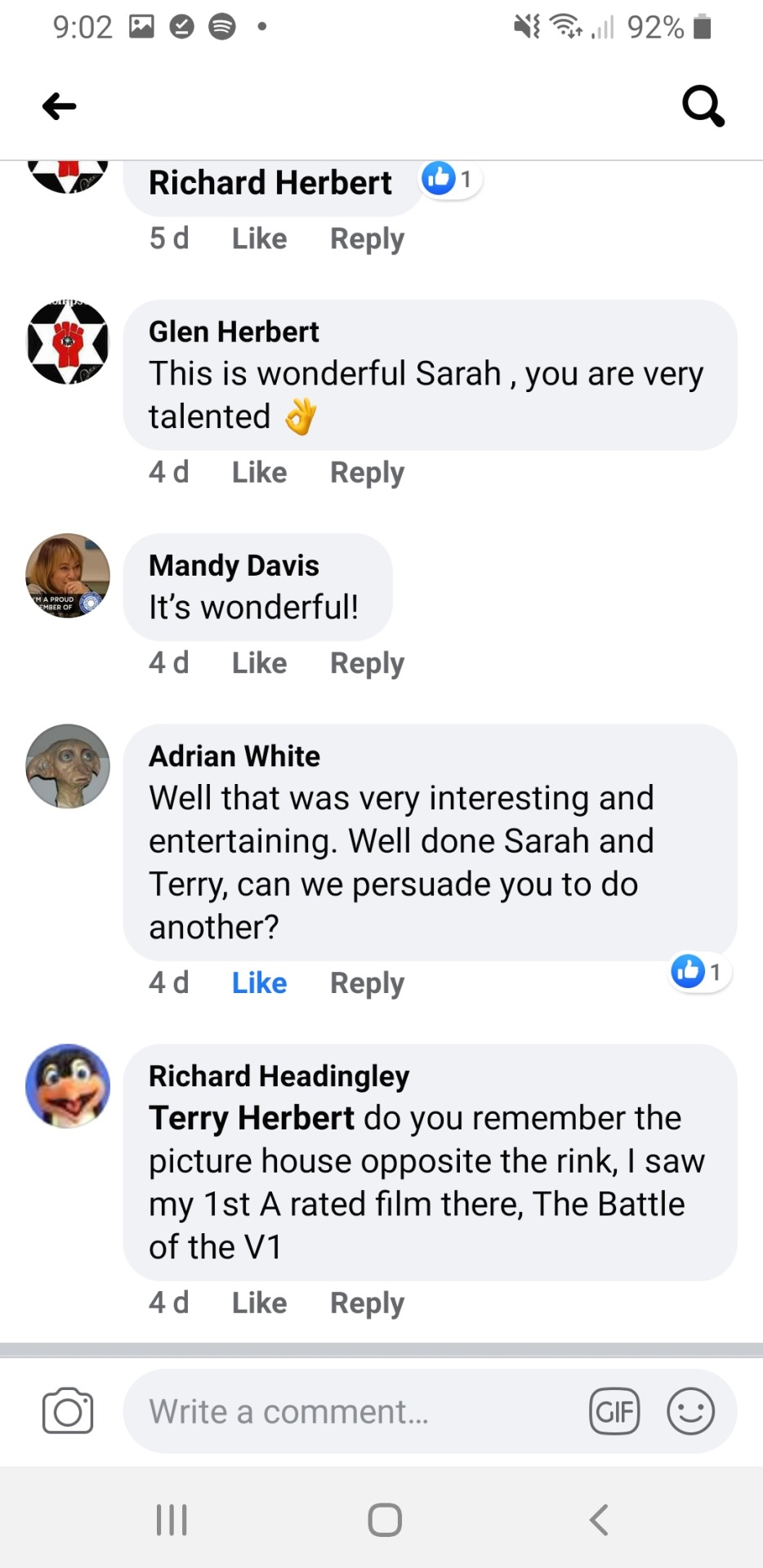
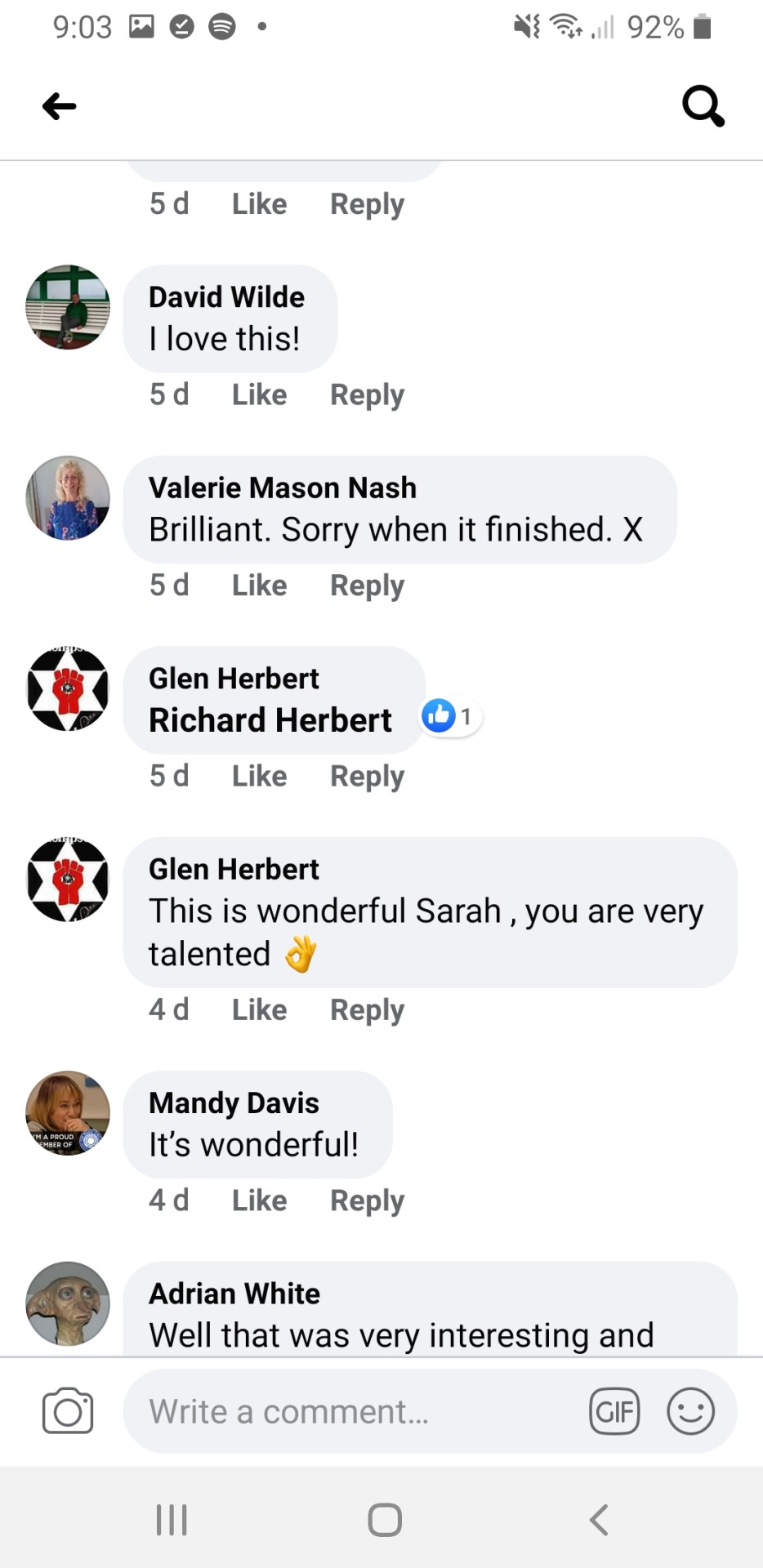
What did your audience think, feel, learn from your story?
I talked to the people around me that had seen my film, as well as looked at the feedback I had from Facebook to see the impression my work had made.
People had learnt that the ice rink was a big entertainment venue and were surprised that so much entertainment such as bands were put on at an ice rink. they didn’t expect that variety of entertainment at an ice rink.
Most of the people I talked to mentioned that they had enjoyed learning about the fact that ice hockey was banned while, contradictorily, speed skating was encouraged.
They felt that it was nice that a smaller venue compared to something like the O2 was able to offer the local community such great leisure opportunities.
My film put Streatham on the map for some people- some had never heard of it before.
People found the film amusing, interesting and entertaining.
The film prompted some on Facebook to reminisce about the area at the time.
My friends said that it felt professional, almost like something that you would watch on children's TV, they suggested it could be part of an educational series about South London.
A suggested improvement was that some of the colour look washed out- and it could have been better lit to bring out some bright colours. I completely agreed with this criticism, but sadly there was nothing I could have done about this in the time-frame given for this film. I will however think about it for future projects.
People found Terry’s voice-over to be very engaging and noted that it added a personal element
Another suggested improvement was subtitles because the film couldn’t be heard very well at the event. This was an oversight on my part and I regretted not thinking about it.
How did they express that?
My film stimulated conversations with friends and neighbours, both in person and on Facebook about the nostalgia of Streatham and the ice rink during the 1960′ s.
My film made people laugh while they were watching it at the Story Lab event. Especially at the parts where Terry slips over on the ice and when the pantomime cow replaces the poor dead barney.
Was it what you expected? What surprised you about their reactions? Why?
I didn’t expect people use the film as a springboard to nostalgia the way they did, especially the general reminiscing on Facebook so that surprised me. I was hoping that the film would be entertaining and make people laugh, and it seems to have been successful in that aspect so that was what I expected in the audience reactions. I was surprised however which jokes hit and which didn’t. I thought there would have been a bigger reaction to the ‘Howard in the melting ice block because of the attractive lady’, but there was barely any. However this may have been because of the sound issues at the event.
What were the differences from audience to audience?
Not many differences- as I have said above, I was interested about which jokes hit and which didn’t in regards to different people viewing my film.
REFLECTION ON THIS FEEDBACK IN PROJECT EVALUATION
0 notes
Text
UNIT EIGHT- AUDIENCE/VISIBILITY: SLSL: GIFTING MY STORY:THE STORY LAB EVENT
On Saturday the 14th of March the South London Story Lab event went ahead as planned despite the looming Coronavirus pandemic! I was happy to gift my story to the people of South London as well as the rest of my year. I was heavily involved with organising the show reel presentation for the event. Dash Chow was in charge of putting the reel itself together, while I was in charge of the rest of the presentation such as a booklet and posters.
Here’s a picture of my film on the big screen!
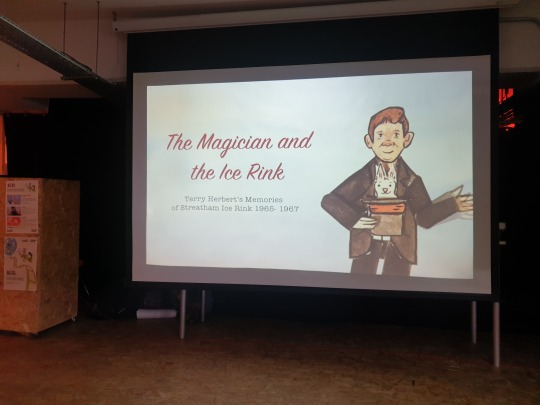
I managed to make a film-screening specific poster, with permission of Georgia McArthur Brown who made the overall Story Lab event poster, using her characters and colour scheme to help make the film screening fit into the event with cohesive branding. I used the same images to make a small booklet telling audiences which films were playing on the show reel and in what order. I collected a description of each film as well as the creators details. I thought this would be a good idea because it would make the show reel seem a more professional presentation as well as making it easier for audiences to see all the films by looking at the booklet.
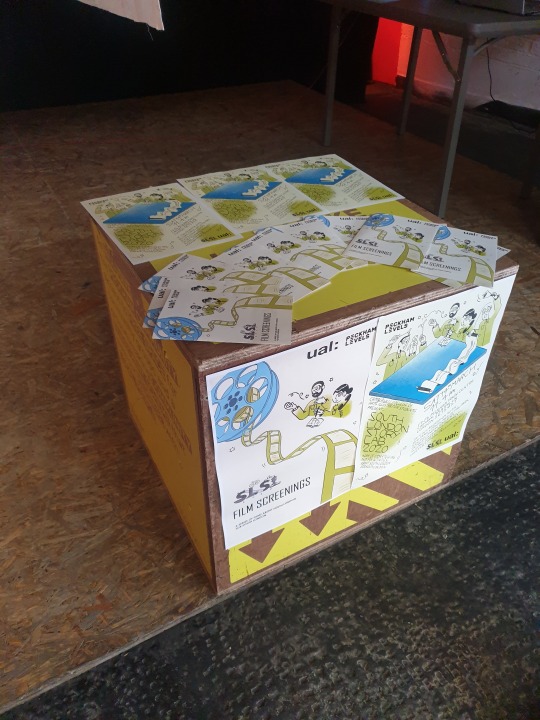
Above: my poster and booklets in front of the screening area.
Below: Working in the Shop!
I did a brief stint working in the illustration show shop between twelve and one pm. I didn’t manage to work the full hour because Terry himself showed up and I had to help him around, but I did try to help out!

The day before the event I found I had a little bit of time left over, and so decided to make something to sell in the shop. I went back to my original idea based around the penguins that visited Streatham Ice Rink during the sixties. I had had to scrap the idea because of lack of connection to the community around the ice rink as well as lack of information. however I decided I could bring it back by making some polymer clay penguin badges. I made cardboard backing for all of them, including some information on the back about the context of the penguins! I did managed to sell three so it was a success.
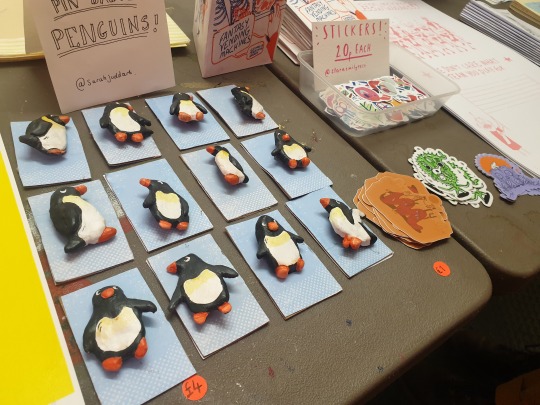
Another photo of my work on the big screen below:
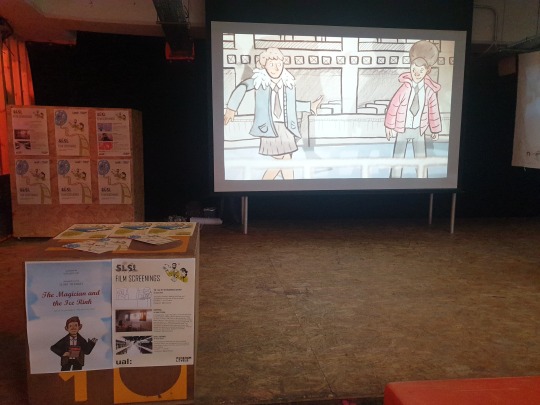
Some close ups of my film screening specific poster and the innards of the booklet I made to act as a programme:
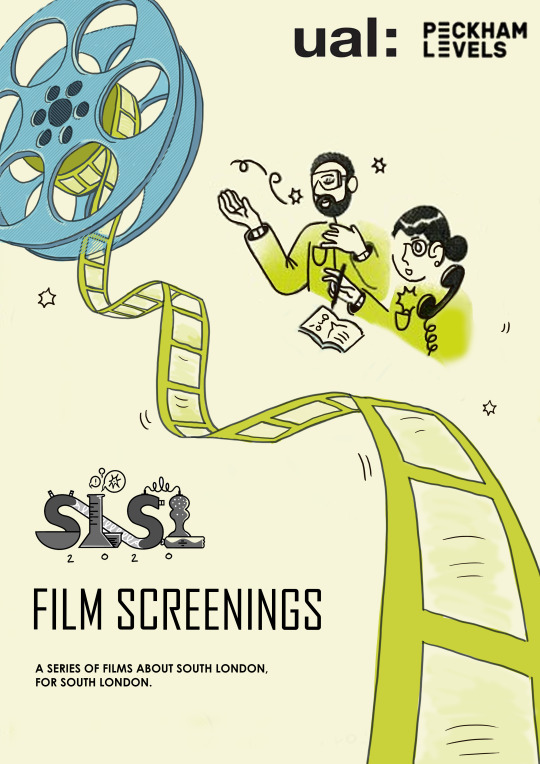
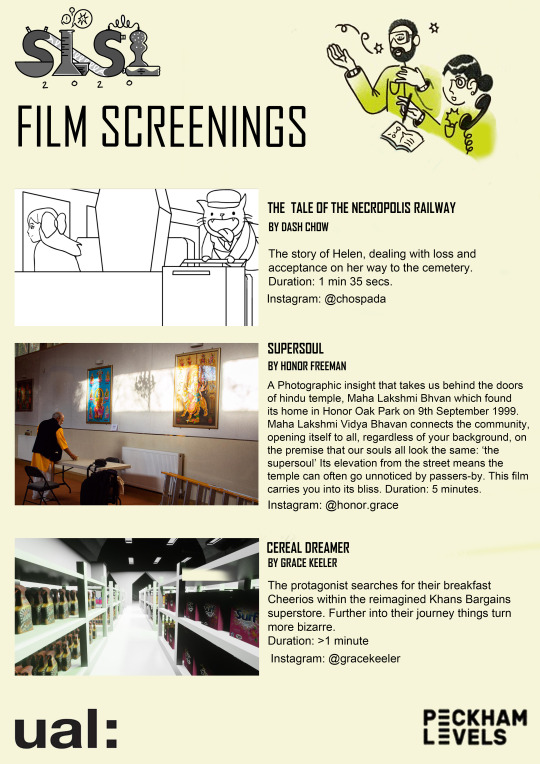

Below a screenshot of the group chat I made specifically for the show reel and a message of me telling people what they could do next:

I also made a specific poster for my film itself. I originally wanted to make an illustration specially for it, but I ended up not having time so I just had to use a screenshot from the film itself.
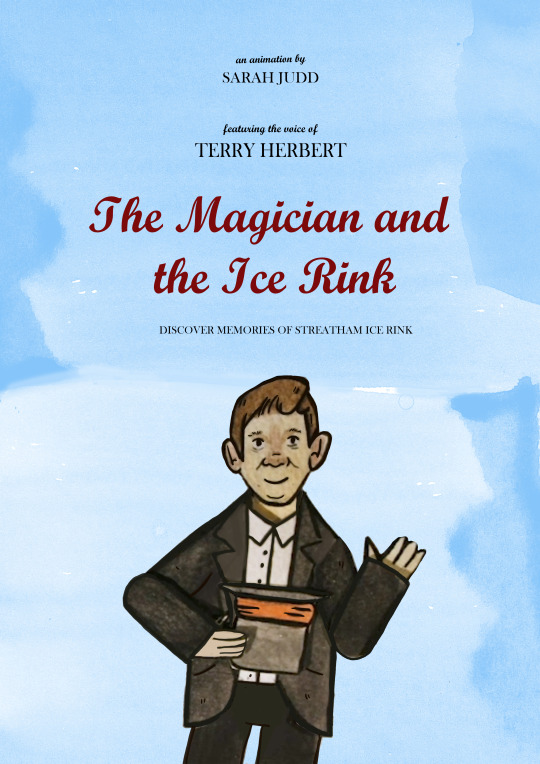
Gifting my story to Terry Herbert himself:
Despite the pandemic, Terry Herbert and his wife managed to make the trip to the event from all the way in Kent! I was massively grateful for their arrival and enjoyed delivering my story to them hugely!
While he was watching the film he laughed at all the point I had thought he might, and seemed to enjoy it greatly. Below is a picture of him, his wife and me at the event.
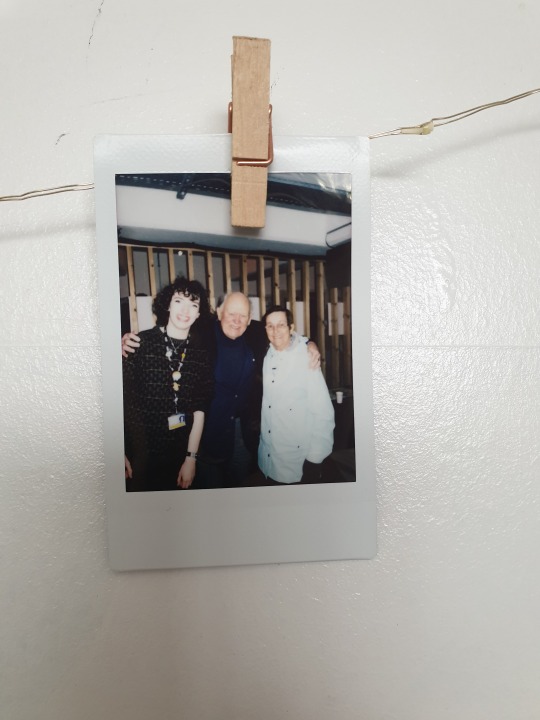
Please see more about my records of audience reaction in my evaluation (more recent post)
0 notes
Video
youtube
UNIT EIGHT// AUDIENCE/ VISIBILITY- SLSL: MY FINAL FILM
This is my final film as shown on the show reel at South London Story Lab and as gifted to Terry Herbert. Please see more recent posts for reflection and evaluation.
0 notes
Text
UNIT EIGHT- AUDIENCE/VISIBILITY: SLSL: THINKING ABOUT DISPLAY
My original idea for the display of my film was to show it at the event using a TV. I wanted to use a TV and not the show reel of everyone’s films initially because I thought that my film would get more recognition if it were displayed on its own. Thinking about my audience at the South London Story Lab event. This is because it would be on a loop of just itself, therefore more people would see it than if it was on a long loop of other films on a show reel.
I began to think about ideas of making my display more interesting, including making a surround for the TV of the exterior of the ice rink itself in order to make it more interesting. I also thought about different aspects of theming such as a table cloth, and a possible accompanying zine. I made sketches in my book:
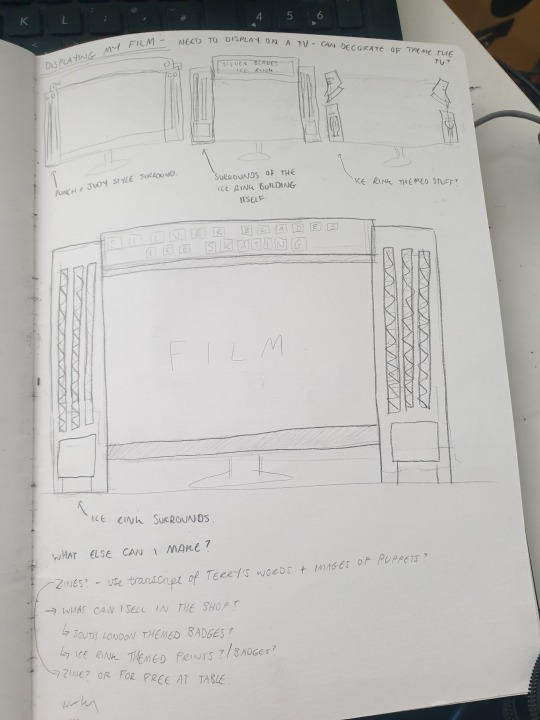
When I showed this a tutorial session, everyone decided that I didn’t need to spend time making all these extra elements, and that it would be ok to simply devote all of my time to the film itself. This was a massive relief to be told thing, because at this point in the process I was absolutely exhausted and spreading myself thin over the long winded creation of the animation itself coupled with these other proposed elements.
After this, I decided to devote all of my time to making the film the best I could, and therefore completely scrapped the idea of a TV and an accompanying zine etc. This meant that I would have to display my film on the join showreel. More on that in later posts!
0 notes
Text
UNIT EIGHT- AUDIENCE/VISIBILITY: SLSL: MAKING MY FILM!
I wanted to make my film using stop motion paper puppetry. I had done stop motion with paper once before last year for the project in which I made a short tourist board animation for a fantasy city called Natari. I made this in the Camberwell digital media suite with a DSLR camera attached to the incredible software which is DragonFrame.
I wanted to do this gain, but decided to make my own multi-plane camera at home because I remembered the limited access to the digital media suite at uni being very stressful when working to a deadline. This was especially true because of the tutors and some technicians being on strike during my production of my film, meaning I might have had even more limited access- so I had to make my own way.
I managed to acquire a pirated copy of DragonFrame as it was out of my budget to buy. It was a cracked edition of the trial version meaning I could still only capture 50 frame per scene but it didn’t have the watermark. This meant I had to film my entire film in short 2 second bursts on DragonFrame, editing it all back together in post.

DragonFrame is only compatible with certain cameras, all of them being proper DSLR’ s. I didn’t have one of these, so I managed to buy one for £100 on ebay second hand- a Canon EOS 1000d. It did the job.
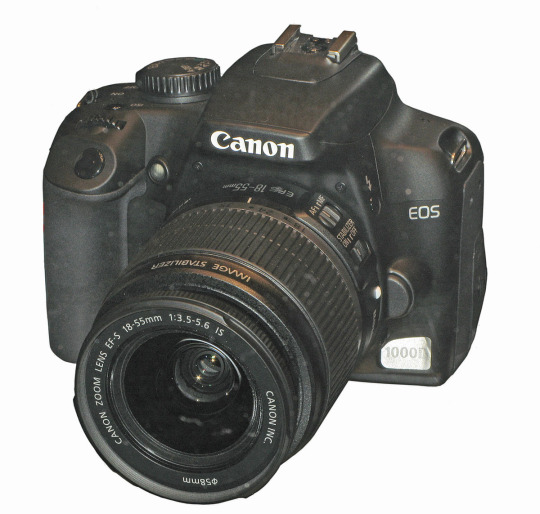
I then filmed my film using the onion skin setting on DragonFrame and my new camera fitted into my multi-plane setup!
0 notes
Video
UNIT EIGHT- AUDIENCE/VISIBILITY: SLSL- MAKING MY FILM
Here is a very short time lapse showing how I made my film in stop motion!
0 notes
Text
UNIT EIGHT- AUDIENCE/VISIBILTY: SLSL- MAKING A MULTI-PLANE CAMERA
After making all of my sets and puppets it was time to make my own multi-plane camera. This would require a lot of problem solving on my part since I didn’t have any of the correct equipment to make it!!
My idea was to make the structure by using the frame of my plastic chest of drawers in my room and place pieces of clear plastic to act as my ‘layers’, placing the camera lens through a hole in the top.
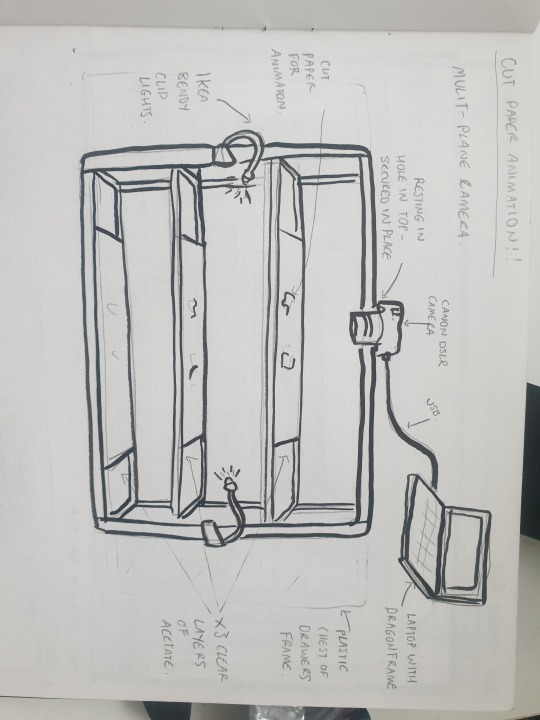
I started off by sawing the pieces of plastic support that are for the drawers from the middle of the structure so that I was left with an empty frame.
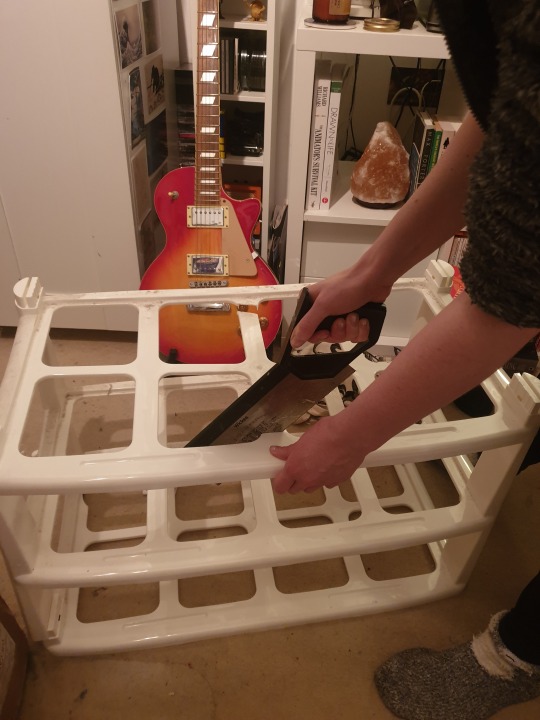
I then found that with the camera in place, the frame was too low, so I used some bits of wood as legs to make it higher- securing it with cable ties. I couldn't make a big enough hole in the brittle plastic without it breaking for the camera lens to fully go through, so I just had to place it on top.

I used little pots of ink to prop one of the layers of plastic up because it was the only thing I had that was exactly the same height and could act as supports.
The next problem I encountered was the fact that because the camera was resting on its own lens- it wouldn't keep focus. Every time I would focus it would slip back around because of its own weight. I needed to devise some way that the lens could hang freely over the hole. I ended up getting a plastic Jacob’s cracker box and cutting a hole in in big enough that the lens could go though the hole and be positioned over the hole in the frame structure. This way I could focus it and it would stay focused.
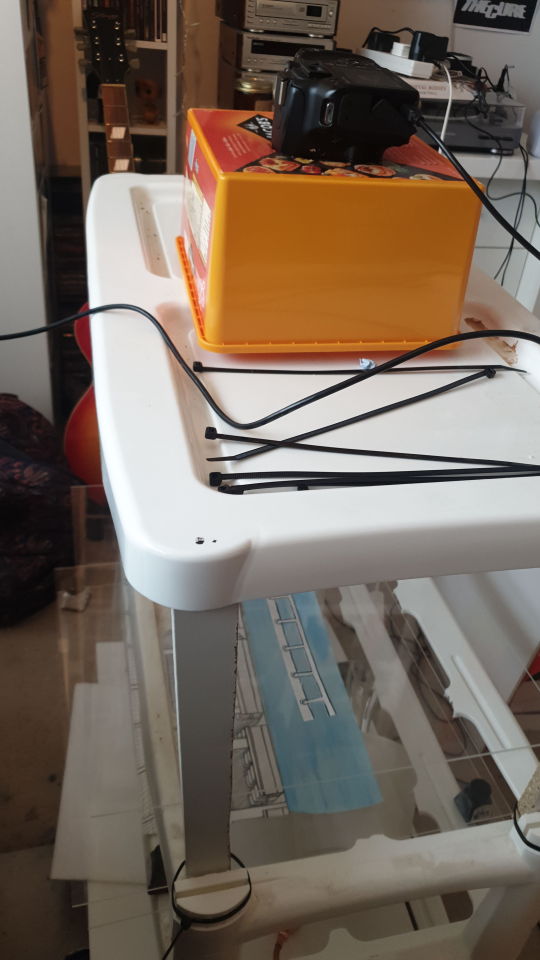
This was a massive success and ended up being the set-up I used throughout my film.
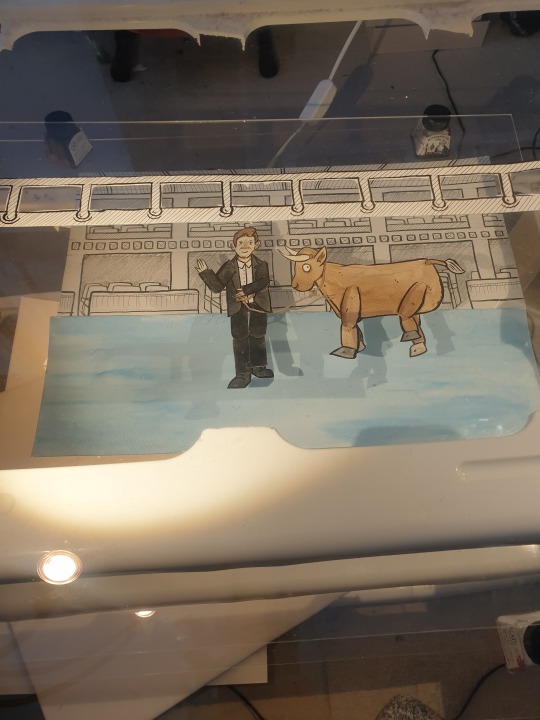
The biggest practical issue I had with my set-up was the lighting. I only had two clip on bendy lamps from IKEA and my bedside table lamp. this was not sufficient lighting to prevent shadows. This was very annoying but I quickly realised that there was nothing I could really do about it and so embraced the look of the shadows which ended up being ok in the final thing!

It was a real effort to position the lights in a way that wouldn’t completely blow out the contrast on the lens, or create reflections on the clear plastic, or be too far away that it wasn’t sufficient light and the animation would come out too dark. I spent a long time fiddling with it.

This photo shows the shadow issue!!
0 notes
Text
UNIT EIGHT_ AUDIENCE/VISIBILITY: SLSL- MAKING STOP MOTION SETS & PUPPETS
Due to time constraints, I couldn't spend very long on making my sets and puppets. This meant that I had to design them around what I had time to make versus the final ‘look’ I wanted the film to have. I decided that I wanted a large number of fully articulated puppets which could have a large range of motion. However I was not going to have time to do multiple head/hand duplicates to enable head turns and complex movements, which meant I had to be creative about the way I articulated them.
I originally thought to place a single stich into the joints of each puppet to enable movement, but then thought this would mean I wouldn’t be able to mix and match puppet parts to save time as they would be permanently joint, as well as the fact that the stiches would limit the movement to single directions. The solution to this was blue tack. It would allow me to take the puppets apart if needed, and would also enable 360 degree movement of limbs should I need it.
I had to make my sets in black and white simply due to the time constraints- I wouldn't’ have time to make the amount of fully coloured backdrops that I wanted to make for my film. As a compromise I decided to do colour puppets against the black and white background. This created a distinctive ‘style’ for my film accidently! I drew the puppet parts separately on watercolour paper and then coloured them with watercolour and went around them in black ink.

Above- My finished Terry Herbert (young) puppet- this would be the puppet with the second most screen-time and so it was important to get him right.

Terry Herbert (young) and Howard Peters the escapologist who was only filmed in profile as I only had time to make one! (and didn’t have time to make duplicates in order for him to turn!)
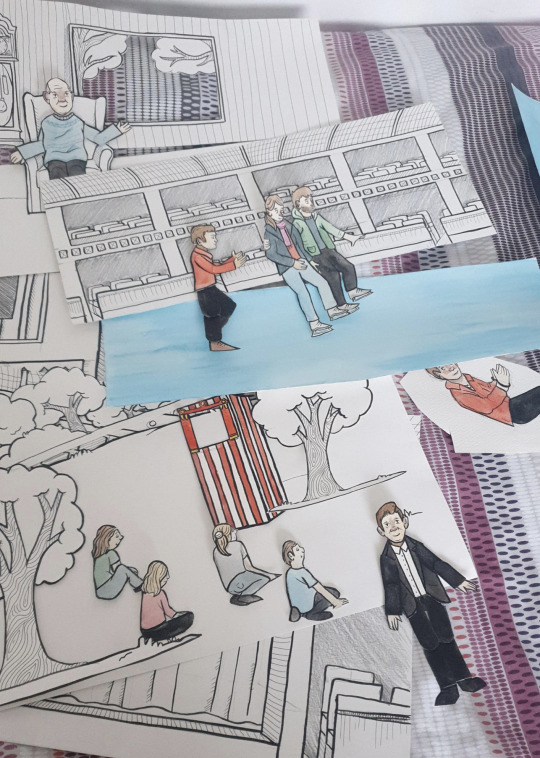
Some Black and white sets as well as puppets for Terry Herbert both young and old, Howard Peters, some children and ‘mum and dad’
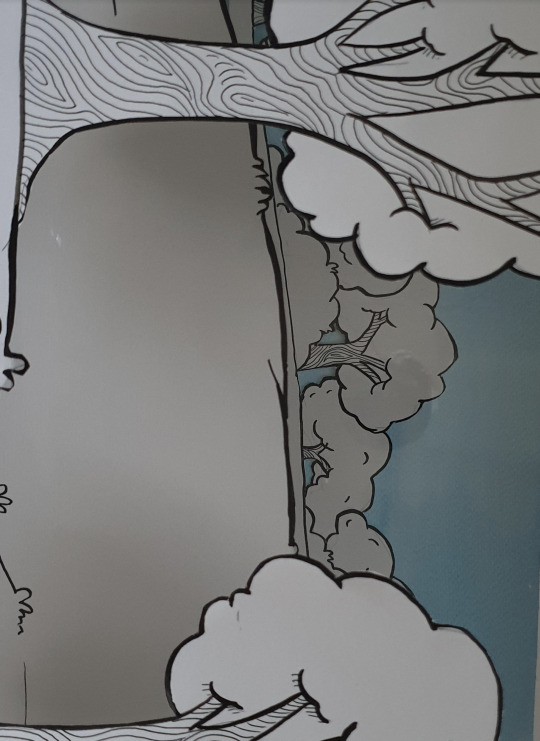
The finished Streatham common set photographed on the multiplane set-up.
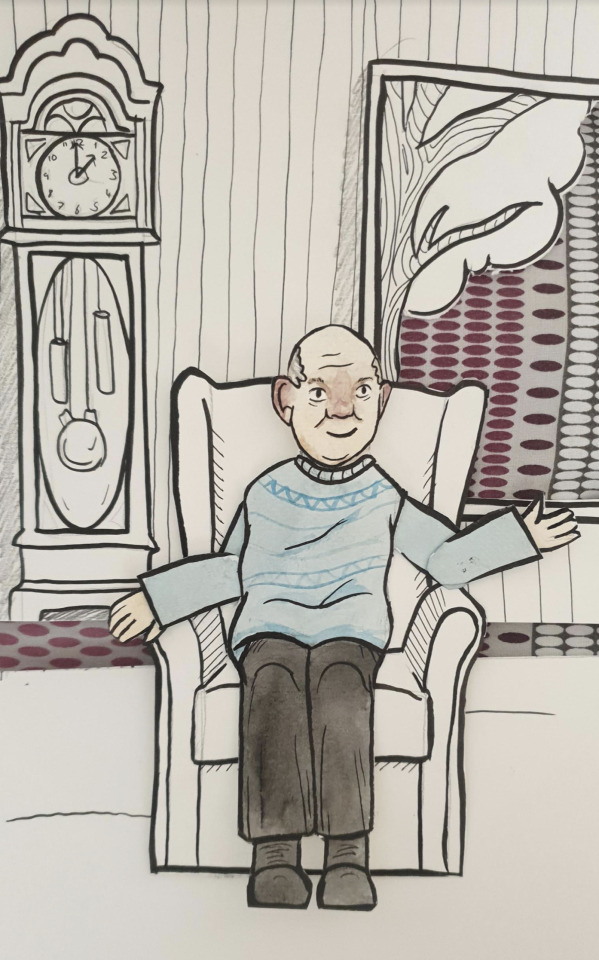
Old Terry Herbert
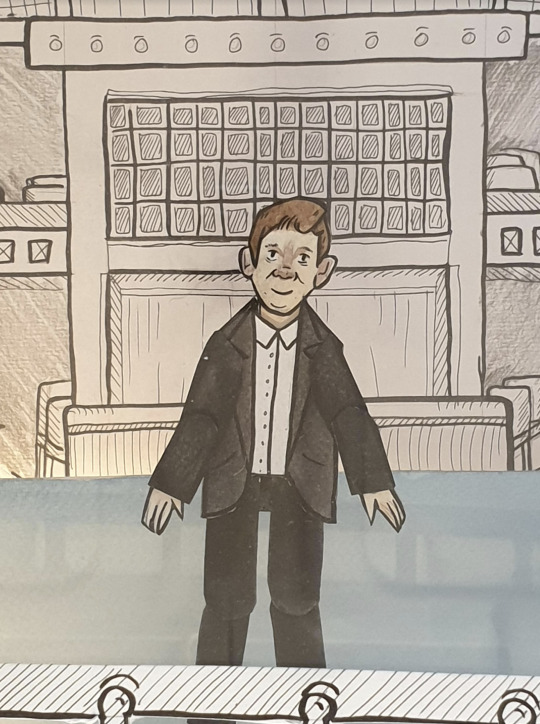
Young terry Herbert photographed on the multi-plane set-up.
0 notes










